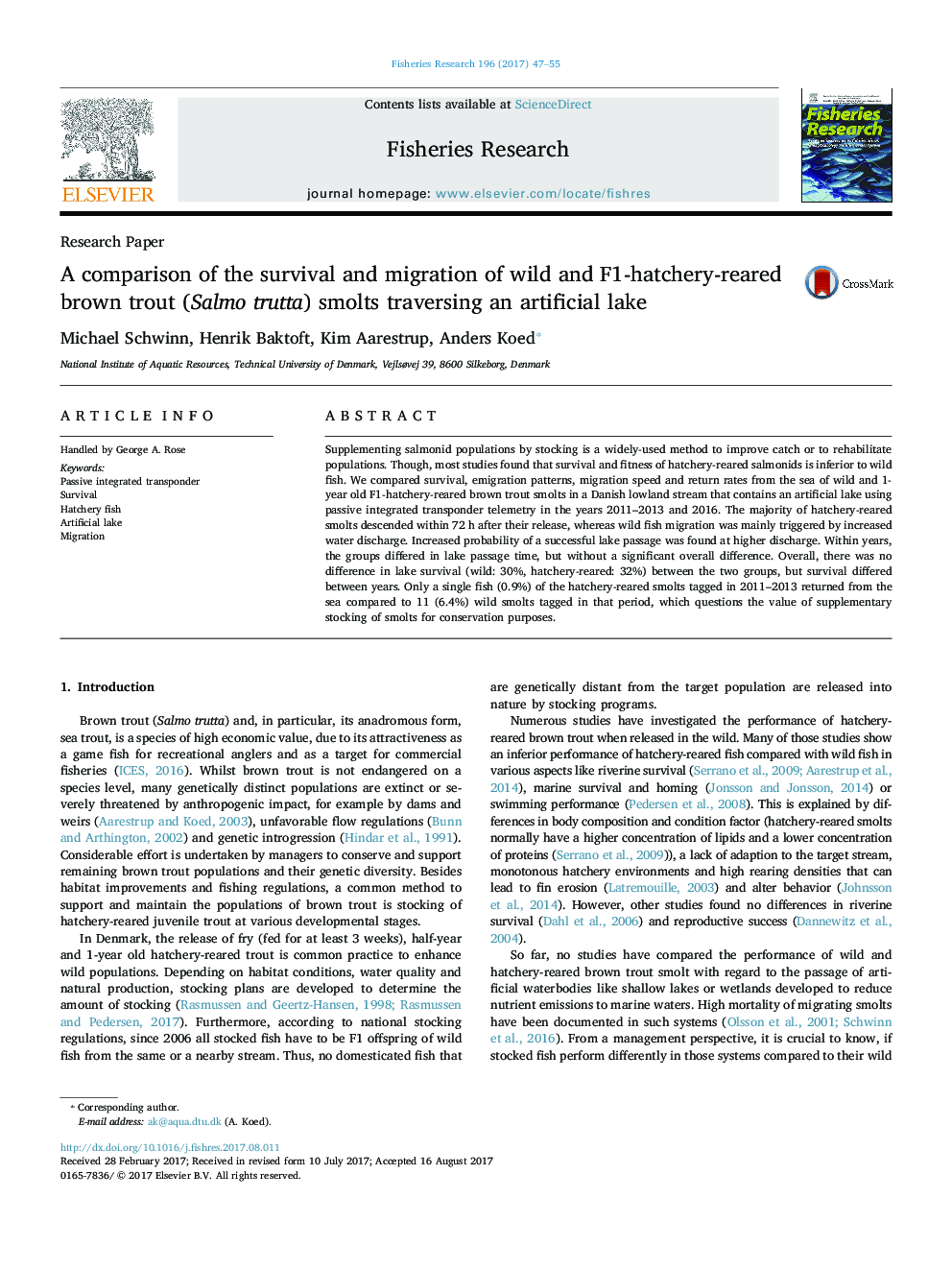| Article ID | Journal | Published Year | Pages | File Type |
|---|---|---|---|---|
| 5765392 | Fisheries Research | 2017 | 9 Pages |
â¢Wild and hatchery-reared smolts migrating through an artificial lake were compared.â¢Both groups had similar low survival and passage times.â¢Sea return rates of hatchery-reared smolts were markedly lower.â¢The value of supplementary stocking in systems with artificial lakes is questionable.
Supplementing salmonid populations by stocking is a widely-used method to improve catch or to rehabilitate populations. Though, most studies found that survival and fitness of hatchery-reared salmonids is inferior to wild fish. We compared survival, emigration patterns, migration speed and return rates from the sea of wild and 1-year old F1-hatchery-reared brown trout smolts in a Danish lowland stream that contains an artificial lake using passive integrated transponder telemetry in the years 2011-2013 and 2016. The majority of hatchery-reared smolts descended within 72Â h after their release, whereas wild fish migration was mainly triggered by increased water discharge. Increased probability of a successful lake passage was found at higher discharge. Within years, the groups differed in lake passage time, but without a significant overall difference. Overall, there was no difference in lake survival (wild: 30%, hatchery-reared: 32%) between the two groups, but survival differed between years. Only a single fish (0.9%) of the hatchery-reared smolts tagged in 2011-2013 returned from the sea compared to 11 (6.4%) wild smolts tagged in that period, which questions the value of supplementary stocking of smolts for conservation purposes.
